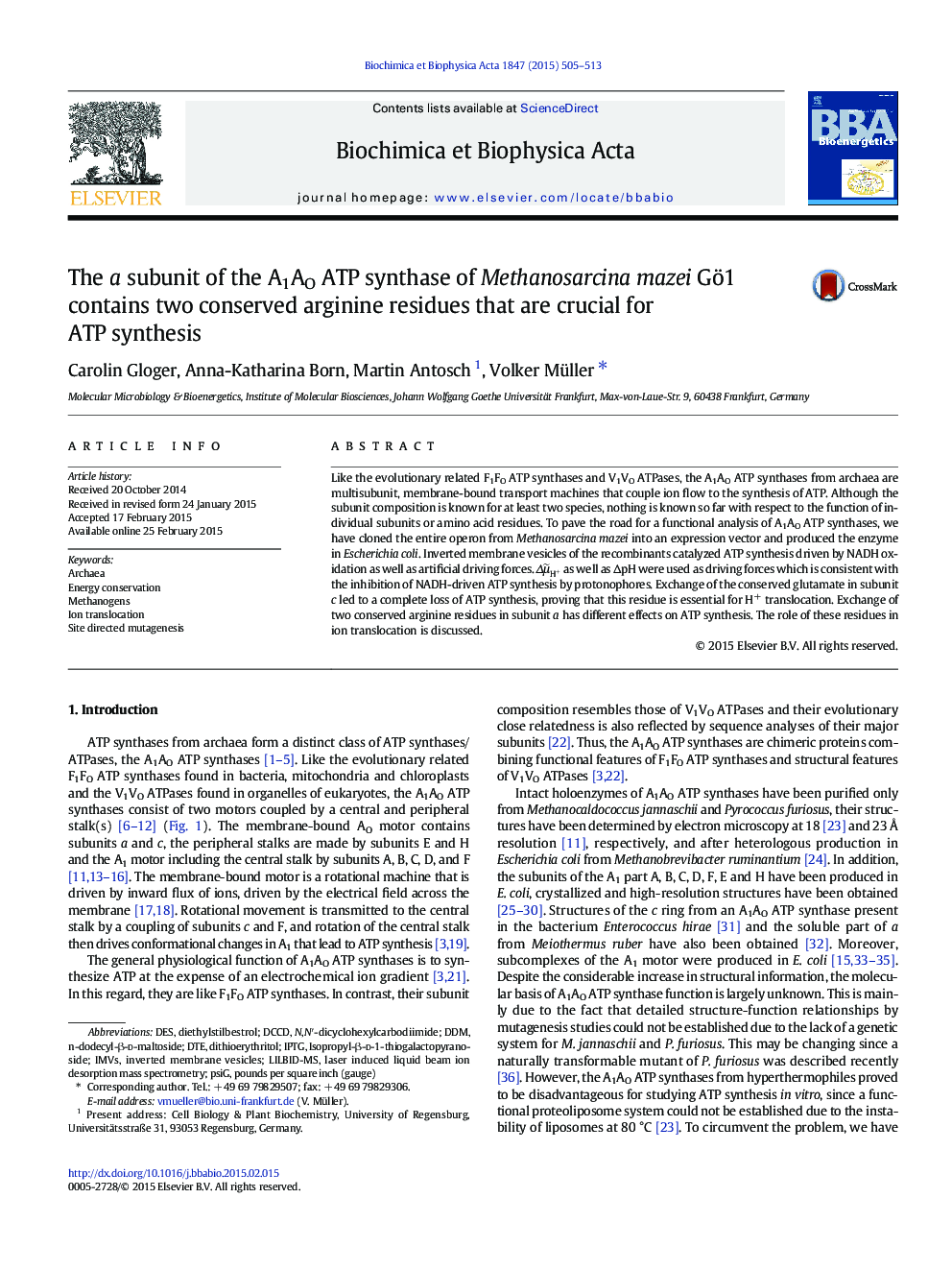| Article ID | Journal | Published Year | Pages | File Type |
|---|---|---|---|---|
| 8298711 | Biochimica et Biophysica Acta (BBA) - Bioenergetics | 2015 | 9 Pages |
Abstract
Like the evolutionary related F1FO ATP synthases and V1VO ATPases, the A1AO ATP synthases from archaea are multisubunit, membrane-bound transport machines that couple ion flow to the synthesis of ATP. Although the subunit composition is known for at least two species, nothing is known so far with respect to the function of individual subunits or amino acid residues. To pave the road for a functional analysis of A1AO ATP synthases, we have cloned the entire operon from Methanosarcina mazei into an expression vector and produced the enzyme in Escherichia coli. Inverted membrane vesicles of the recombinants catalyzed ATP synthesis driven by NADH oxidation as well as artificial driving forces. ÎμËH+ as well as ÎpH were used as driving forces which is consistent with the inhibition of NADH-driven ATP synthesis by protonophores. Exchange of the conserved glutamate in subunit c led to a complete loss of ATP synthesis, proving that this residue is essential for H+ translocation. Exchange of two conserved arginine residues in subunit a has different effects on ATP synthesis. The role of these residues in ion translocation is discussed.
Keywords
Related Topics
Life Sciences
Agricultural and Biological Sciences
Plant Science
Authors
Carolin Gloger, Anna-Katharina Born, Martin Antosch, Volker Müller,
